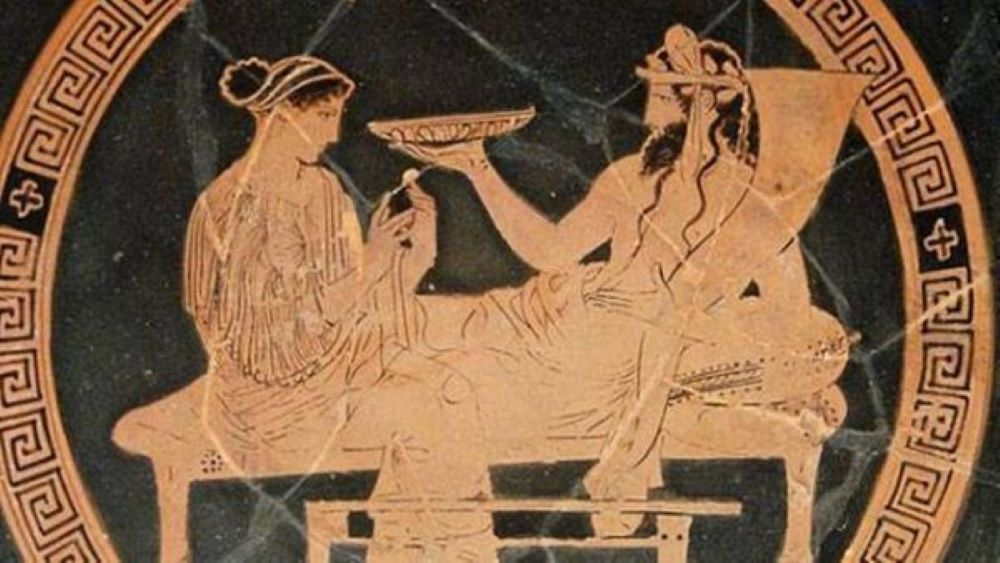Prostitution in ancient Greece was a multifaceted institution that played a significant role in the cultural, social, and economic life of Greek cities. Its existence and regulation reveal much about ancient Greek society's values and hierarchies. This article delves into the types of prostitution, the role and status of prostitutes, the regulation of brothels, legal and social aspects, cultural depictions, and the economic impact of this profession in ancient Greece.
Types of Prostitution
Hetairai (Companions)
Role and Status: Hetairai were high-class courtesans who provided more than just sexual services. They offered companionship, intellectual conversation, and entertainment at symposia (drinking parties). Unlike common prostitutes, hetairai were often well-educated and could hold significant influence in social and political circles. Their roles were multifaceted, blending elements of companionship, artistry, and sometimes political advisory.
Famous Hetairai: Notable hetairai included Aspasia, who was associated with the statesman Pericles and known for her intellectual prowess and influence. Phryne was another famous hetaira, celebrated for her beauty and her dramatic trial for impiety, during which she famously revealed her breasts to the jury, leading to her acquittal.
Pornai (Common Prostitutes)
Role and Status: Pornai were the common prostitutes who worked in brothels or on the streets. They typically came from the lower classes, and many were slaves or freedwomen. Their services were more accessible to the average citizen due to their lower fees, and their working conditions and social standing were considerably lower than those of the hetairai.
Economics: Pornai were economically vital as they provided affordable sexual services to the broader populace. Their lower fees meant that they served a wider range of clients, from common laborers to less affluent members of society.
Brothels and Regulation
Brothels
Brothels, known as "porneia," were widespread in ancient Greece and were particularly prevalent in cities like Athens. These establishments varied in quality, from luxurious brothels catering to wealthy patrons to more basic facilities for common people. The structure and amenities of these brothels often reflected the status of the prostitutes working within them.
State Regulation
In Athens, the state regulated prostitution to some extent. The government levied taxes on brothels and individual prostitutes, using the revenue to fund public works and services. This regulation aimed to control the spread of disease and maintain public order. By institutionalizing prostitution, the state acknowledged its inevitability and sought to manage its social impacts.
Legal and Social Aspects
Legal Status
Prostitution was legal in ancient Greece, and prostitutes had certain protections under the law. However, they were also subject to social stigmatization and legal restrictions. Prostitutes were barred from participating in certain religious ceremonies and holding public offices, reflecting their marginal status in society.
Marriage and Citizenship
Prostitutes, particularly the lower-class pornai, were generally excluded from respectable marriage and could not claim Athenian citizenship for their children. This exclusion underscored the social boundaries and hierarchies that governed ancient Greek society, maintaining the purity of the citizen class.
Cultural Depictions
Literature and Art
Prostitution was a common theme in Greek literature and art. It was frequently depicted in comedies by playwrights like Aristophanes, who often used the profession to satirize societal norms and behaviors. Vase paintings and other artworks from the period frequently depicted scenes involving hetairai and symposia, highlighting the integration of these courtesans into social and cultural life.
Philosophical Views
Philosophers like Plato and Xenophon discussed prostitution, often with moralizing tones. Plato, in particular, contrasted the higher pursuits of love and intellectual companionship with the purely physical aspects of prostitution. In his dialogues, he explored themes of love and sexuality, sometimes using prostitution as a foil to idealized forms of love and partnership.
Economic Impact
Economic Contribution
Prostitution contributed significantly to the urban economy, particularly in large cities like Athens and Corinth. The income generated from brothels and individual prostitutes supported various sectors, including hospitality and retail. The presence of prostitutes in markets and social gatherings also stimulated economic activity in these areas.
Slavery
Many prostitutes were slaves or former slaves, highlighting the intersection of prostitution with the broader economic system of slavery in ancient Greece. This system allowed for the exploitation of women and men for economic gain, reflecting the deeply ingrained inequalities of Greek society.
In conclusion prostitution in ancient Greece was a deeply ingrained institution, reflecting the complexities of Greek social, economic, and cultural life. From the influential hetairai to the marginalized pornai, prostitutes played various roles and occupied different statuses within Greek society. State regulation, legal constraints, and cultural depictions all underscore the multifaceted nature of this profession and its significance in ancient Greek civilization.
Sources
Davidson, J. (1997). Courtesans and Fishcakes: The Consuming Passions of Classical Athens. HarperCollins.
McClure, L. (2003). Courtesans at Table: Gender and Greek Literary Culture in Athenaeus. Routledge.
Kurke, L. (1997). "Inventing the Hetaira: Sex, Politics, and Discursive Conflict in Archaic Greece." Classical Antiquity, 16(1), 106-150.
Henry, M. M. (1985). Prisoner of History: Aspasia of Miletus and Her Biographical Tradition. Oxford University Press.







